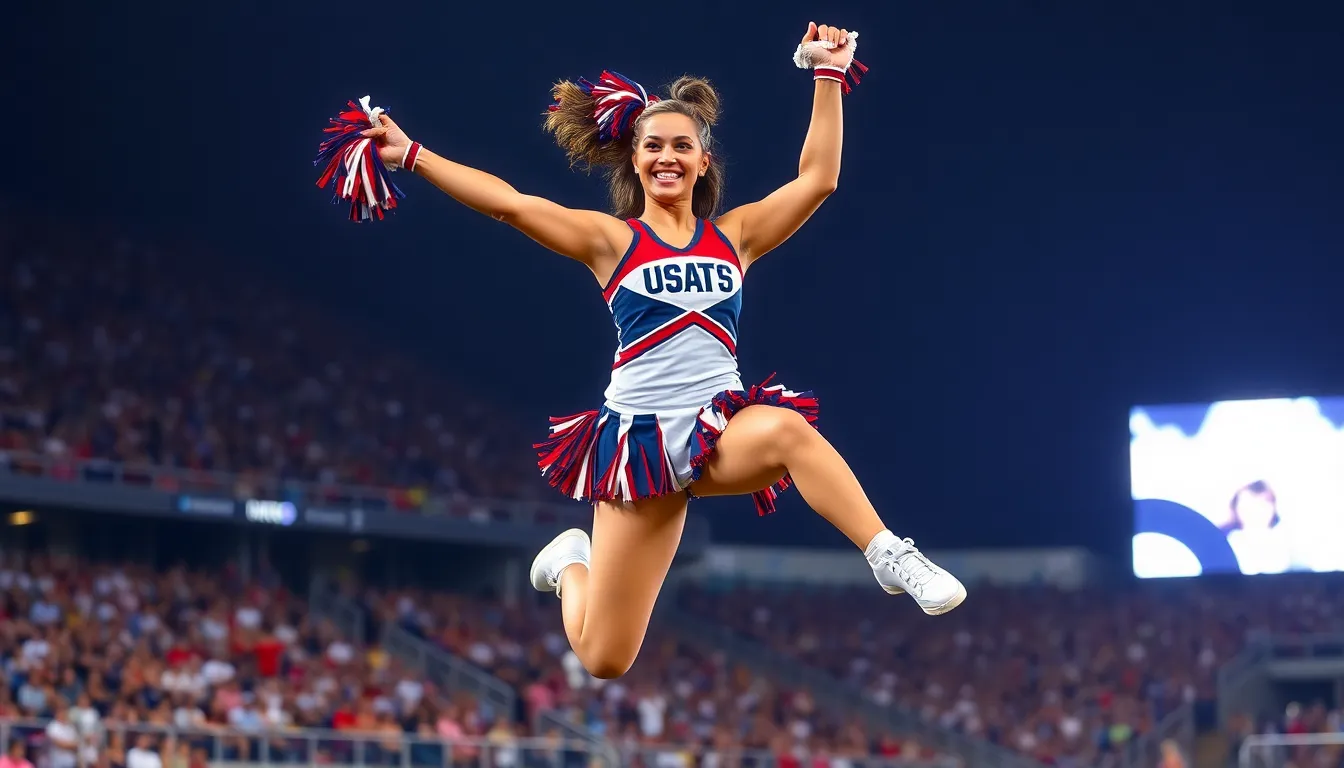In the vibrant world of cheerleading, the spotlight often shines on the athleticism and artistry of the performers. Cheerleaders bring energy to the sidelines, captivating audiences with their synchronized routines and infectious enthusiasm. However, there’s a growing fascination surrounding the more risqué side of cheerleading, often referred to as “cheerleader p***.” This term encompasses a variety of adult-themed content that plays on the allure of cheerleaders, blending sports with sensuality.
As this niche continues to gain traction, it raises questions about the intersection of sports culture and adult entertainment. Fans are drawn not just to the performances but also to the personalities behind the pom-poms. Understanding this phenomenon offers insights into broader trends in fandom, sexuality, and the evolving landscape of cheerleading itself.
Table of Contents
ToggleOverview of Cheerleader P***
Cheerleader p*** represents a growing phenomenon intertwining cheerleading with adult entertainment themes. This trend often features cheerleaders showcasing their skills and personalities in more provocative contexts. The allure lies in the combination of athletic prowess with sensual expressions, attracting diverse audiences.
Many cheerleaders, while maintaining their traditional roles, also embrace social media platforms to engage with fans. They share behind-the-scenes glimpses into their lives, blurring the lines between sports and adult expression. This platform allows them to develop personal brands that resonate with wider fandoms.
The surge in interest prompts discussions around empowerment and objectification. Supporters argue that cheerleader p*** empowers cheerleaders by providing financial opportunities and a voice. Critics, however, raise concerns about the potential commodification of cheerleading and its implications on athletic integrity.
Understanding this phenomenon involves examining the cultural shifts in both sports and adult entertainment. As cheerleading continues to evolve, it reflects changing societal attitudes toward sexuality, performance, and identity in modern fandoms.
Historical Context

Understanding “cheerleader p***” requires delving into the evolution of cheerleading and its cultural significance over time.
Origins of Cheerleading
Cheerleading originated in the late 19th century, primarily as a male-dominated activity aimed at rallying and energizing crowds during sporting events. The first organized cheer was created in 1884 by Thomas Peebles at Princeton University. Initially, cheerleading focused on organized cheers and chants, rather than complex routines. It wasn’t until the 1920s that women began to dominate the sport, showcasing their skills through choreography and gymnastics. This shift allowed cheerleading to transform into a performance art, intricately connected to the vibrant energy of American sports culture.
Evolution of Cheerleader Roles
In the mid-20th century, cheerleading emerged as a highly visible role in American sports, especially within collegiate and professional leagues. The introduction of standardized uniforms and intricate formations amplified cheerleaders’ visibility. By the 1970s and 1980s, the persona of the cheerleader shifted, emphasizing femininity and athleticism, which attracted broader audiences. The rise of media, including televised sports and pop culture, further popularized cheerleading. In the 1990s and 2000s, some cheerleaders ventured into modeling and entertainment, expanding their roles beyond traditional cheerleading. This evolution laid the groundwork for the contemporary phenomenon of “cheerleader p***,” fusing athletic performance with adult entertainment themes, significantly altering the perception of cheerleaders and their cultural impact.
Cultural Impact of Cheerleader P***
The phenomenon of cheerleader p*** brings forth significant cultural implications, influencing media representation and shaping societal perceptions.
Representation in Media
Media representation plays a crucial role in shaping perceptions of cheerleader p***. Cheerleader p*** appears in various formats, from social media posts to adult films, often highlighting athletic skill alongside sexual appeal. This representation not only reflects evolving attitudes toward cheerleading but also influences how audiences engage with the sport. Shows and movies incorporating cheerleaders frequently emphasize their dual identity as both athletes and entertainers. Prominent cheerleading-themed series exemplify this trend, showcasing athletes who navigate performance and personal challenges, further blurring the lines between traditional cheerleading roles and adult themes.
Societal Perceptions
Societal perceptions around cheerleader p*** evolve alongside changing cultural landscapes. Many view the trend as a form of empowerment, providing cheerleaders an opportunity to take control of their narratives and explore their identities. Conversely, critics express concerns about the risk of objectification, equating cheerleader p*** with the commodification of athleticism. As cheerleaders gain influence through digital platforms, they contribute to broader discussions on body autonomy and self-expression. The contrasting perspectives highlight tension within society, reflecting ongoing debates about the intersections of female empowerment, sports culture, and adult entertainment, impacting how cheerleaders are perceived in contemporary culture.
The Art of Cheerleading Performance
Cheerleading performance combines athleticism and artistry, requiring a blend of technical skills and creative expression. This section examines the choreography, dance techniques, and key elements that define cheerleading routines.
Choreography and Dance Techniques
Choreography in cheerleading emphasizes precise movements and syncopated rhythms. Teams often incorporate elements from various dance styles, including jazz, hip-hop, and contemporary, enhancing their routines with flair. Movements include jumps, spins, and formations designed for visual impact.
Cheerleaders utilize specific dance techniques such as:
- Isolation: Focusing on individual body parts for enhanced expressiveness.
- Levels: Varying heights among performers to create dynamic visuals.
- Mirroring: Synchronizing movements with teammates to establish unity and cohesion.
Effective choreography aligns with music and intended themes, optimizing audience engagement. Routines often tell a story or convey a message, merging dance with emotional expression.
Key Elements of Cheerleading Routines
Key elements in cheerleading routines contribute to their overall effectiveness and impact. Several essential components include:
- Stunts: Creating visually striking moments where cheerleaders lift teammates, showcasing strength and balance.
- Pyramids: Forming structures with multiple performers to display teamwork and intricate planning.
- Tumbling: Incorporating gymnastic skills like flips and somersaults to elevate the routine’s excitement.
- Cheers and Chants: Using vocal strength to boost team spirit and connect with audiences.
The successful blend of these elements enhances performances, making them captivating and memorable. Cheerleaders constantly refine their skills, adapting routines to match evolving styles and audience expectations.
The phenomenon of cheerleader p*** represents a significant shift in the perception of cheerleading within both sports and entertainment. As cheerleaders navigate this evolving landscape they’re redefining their roles and embracing new opportunities for self-expression. This blend of athleticism and sensuality not only captivates audiences but also sparks important conversations about empowerment and objectification.
While some celebrate the financial and personal autonomy it offers cheerleaders others voice concerns about the implications for athletic integrity. The ongoing dialogue surrounding cheerleader p*** reflects broader societal changes in attitudes toward performance and identity. As this trend continues to grow it’ll undoubtedly shape the future of cheerleading and its cultural significance.



